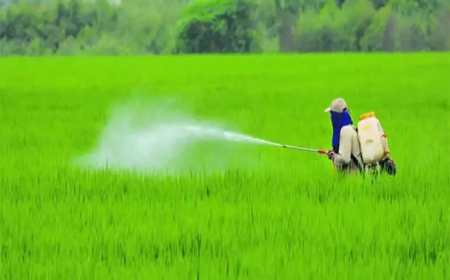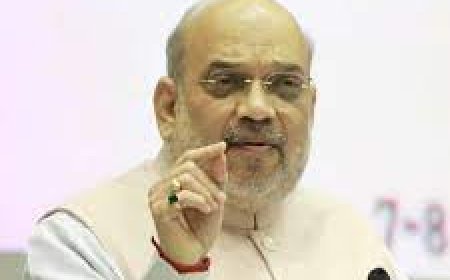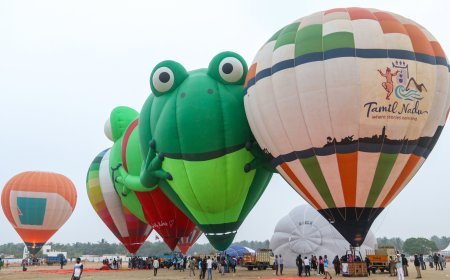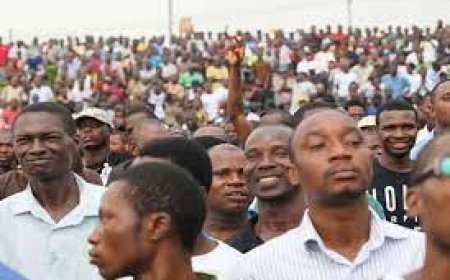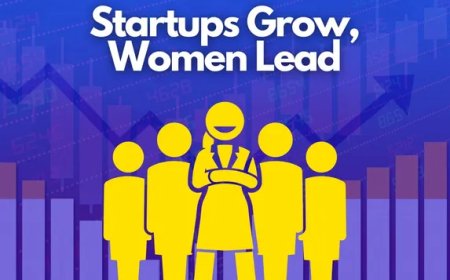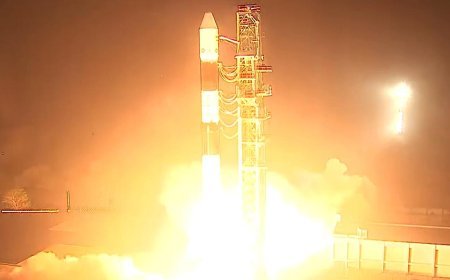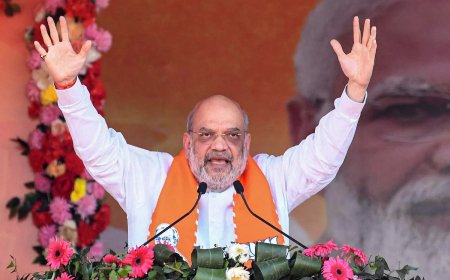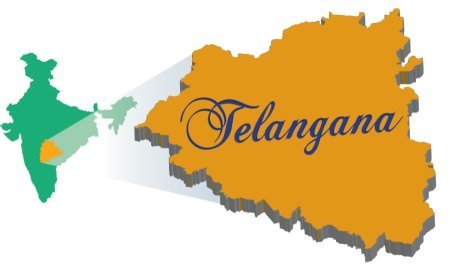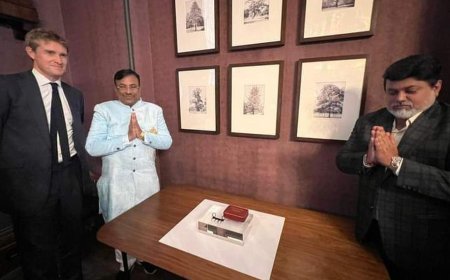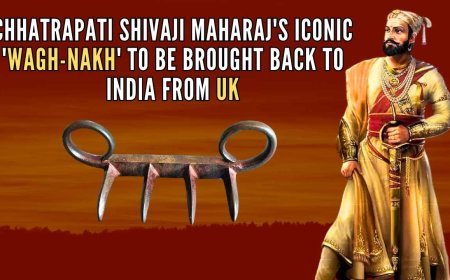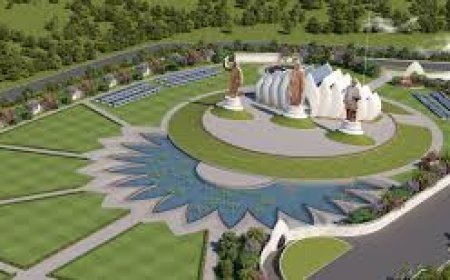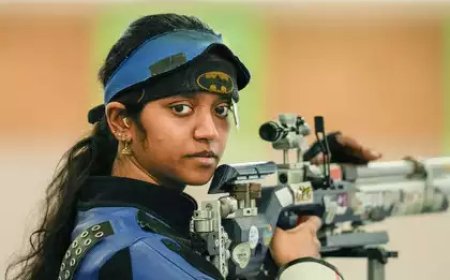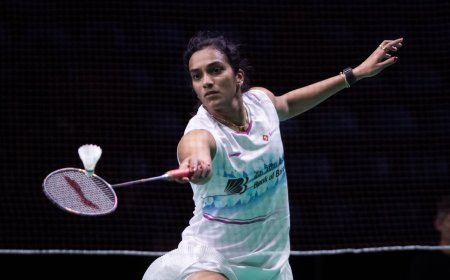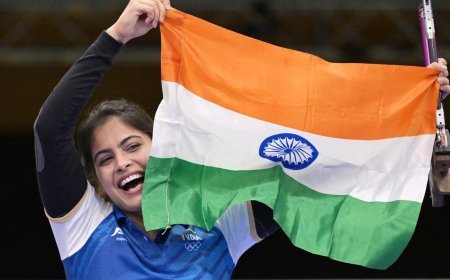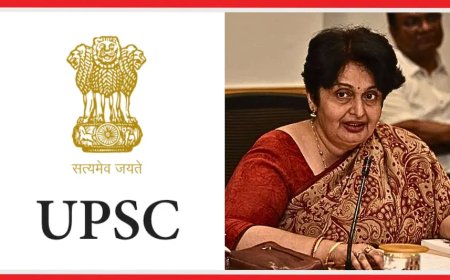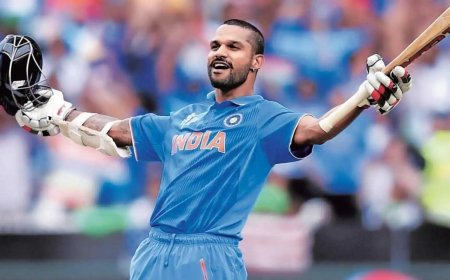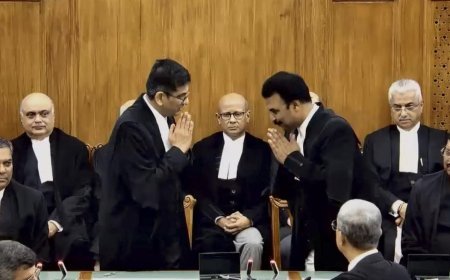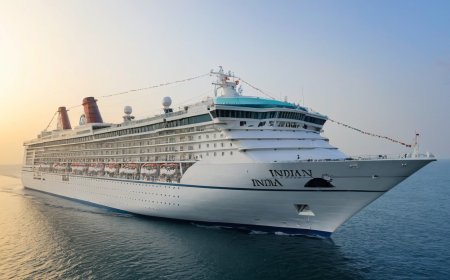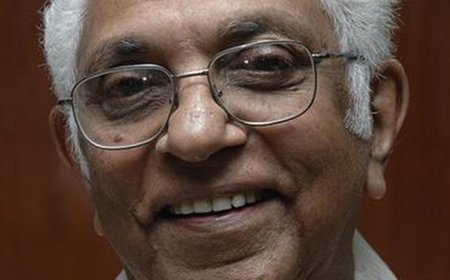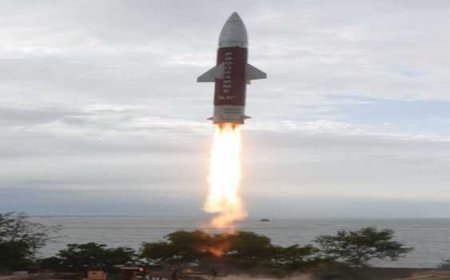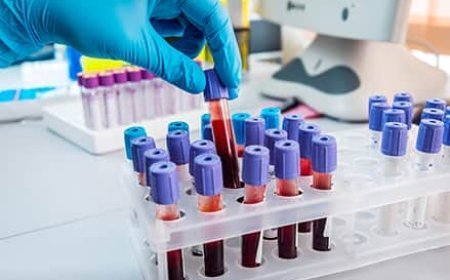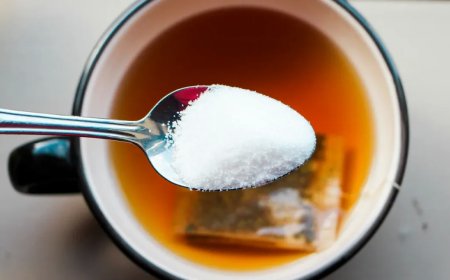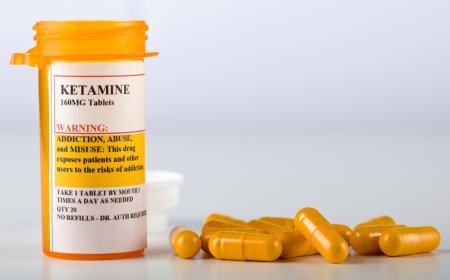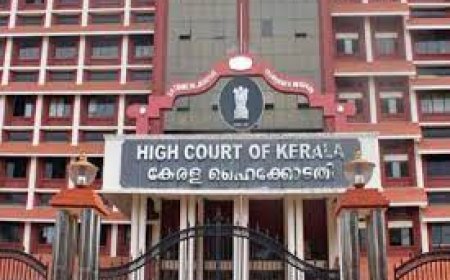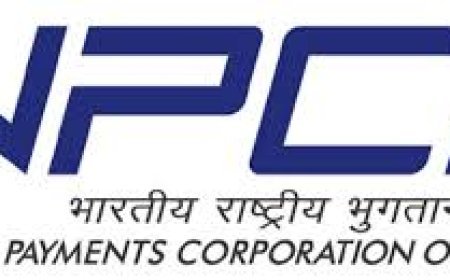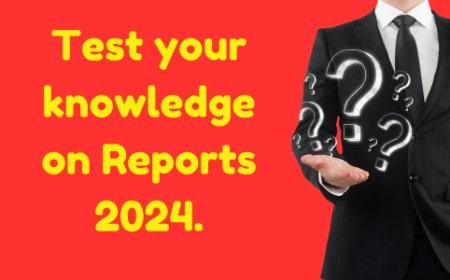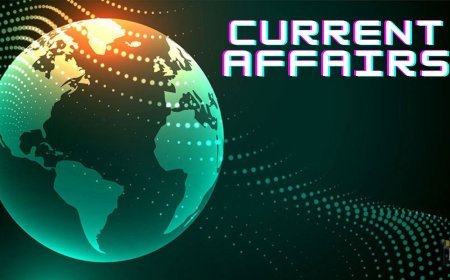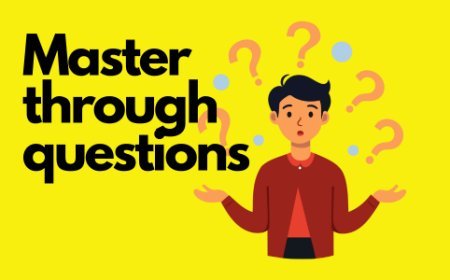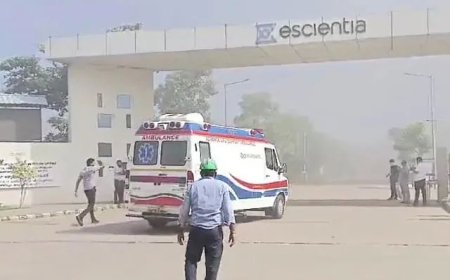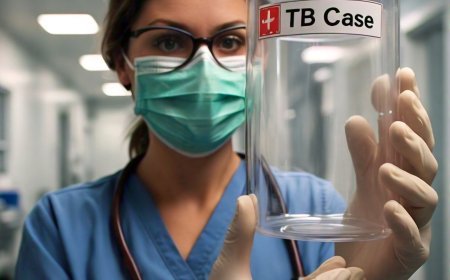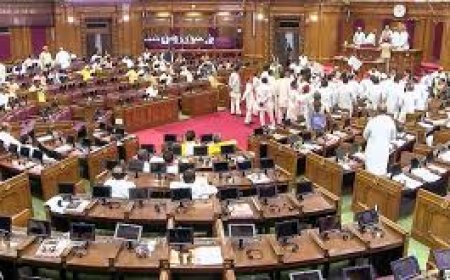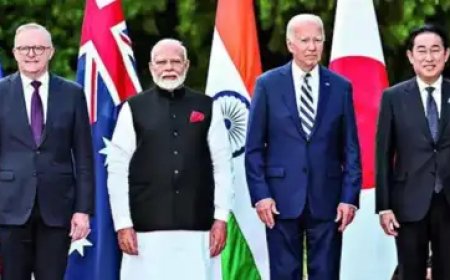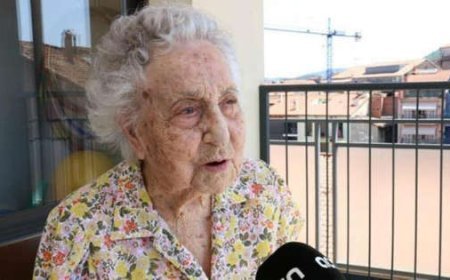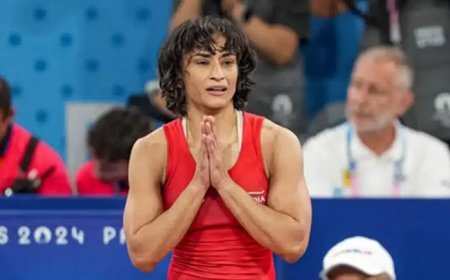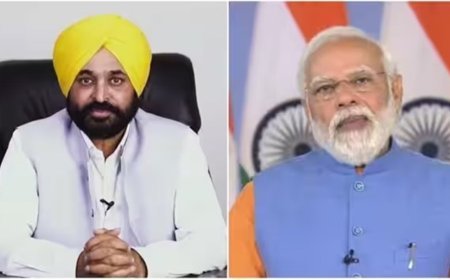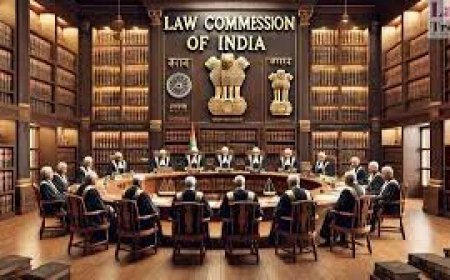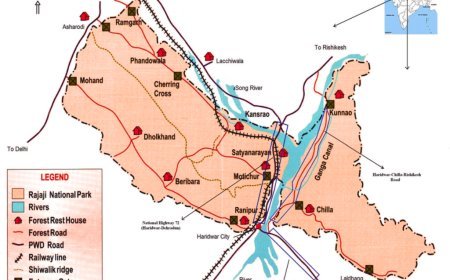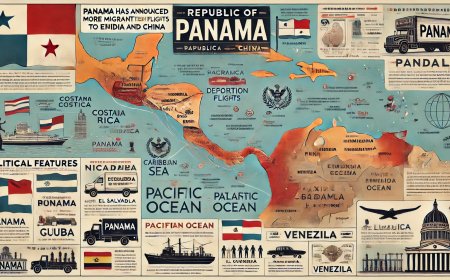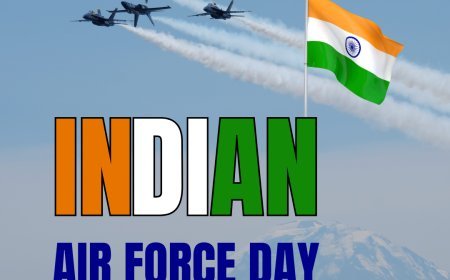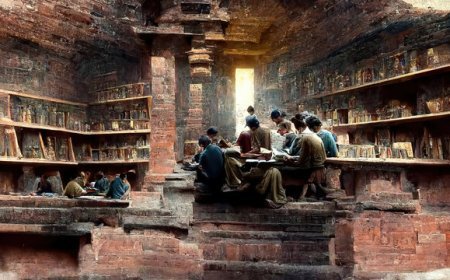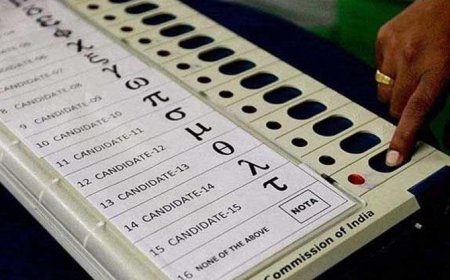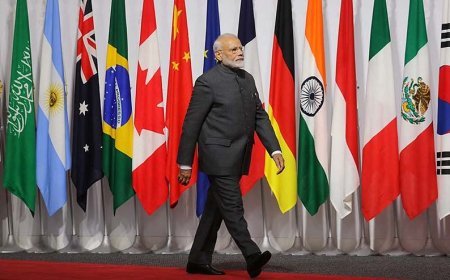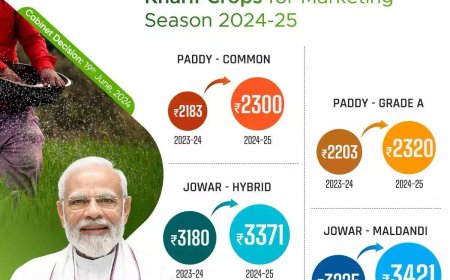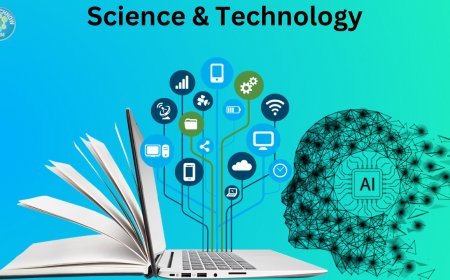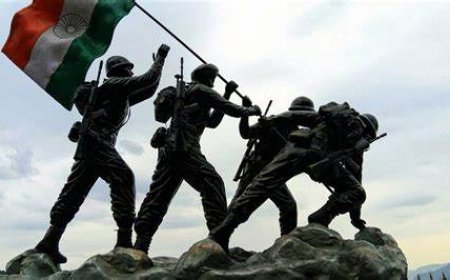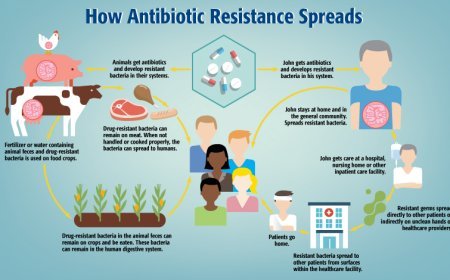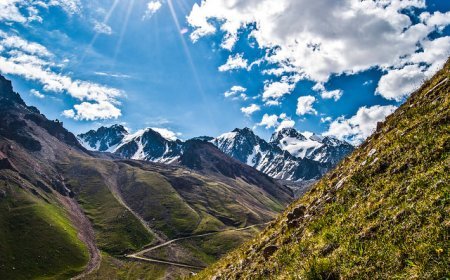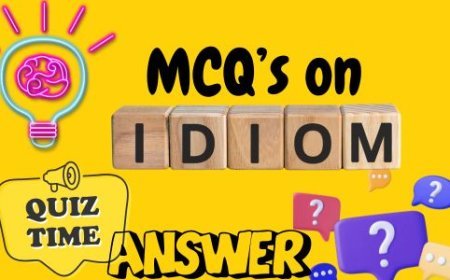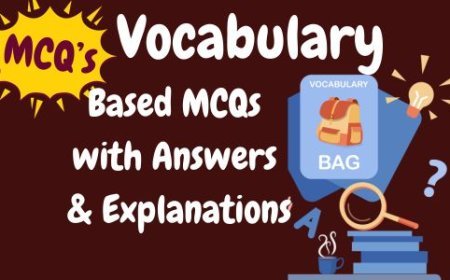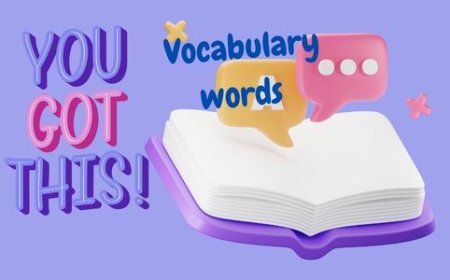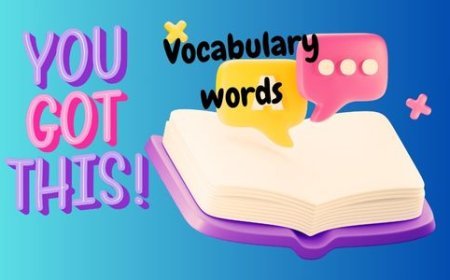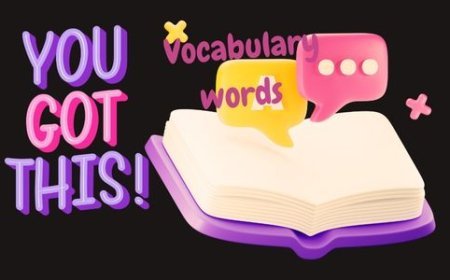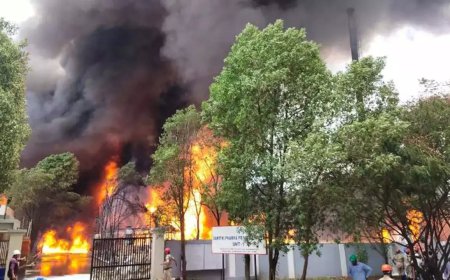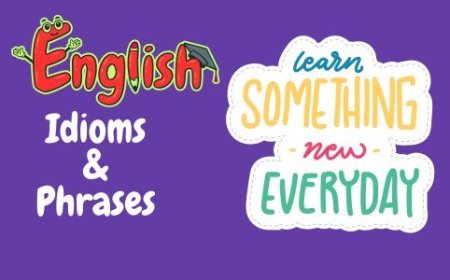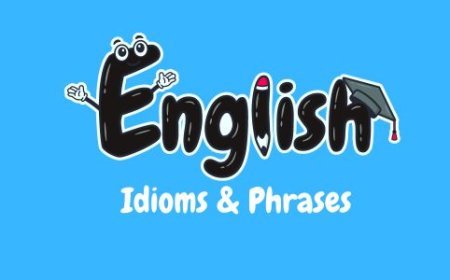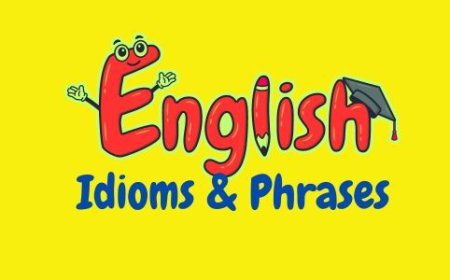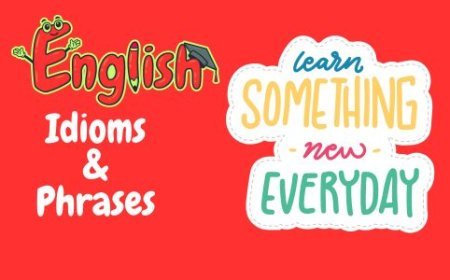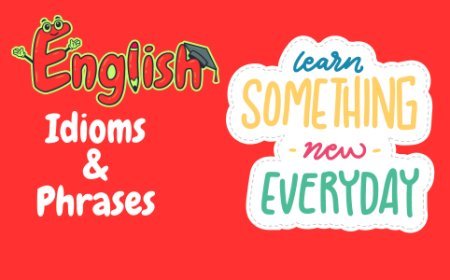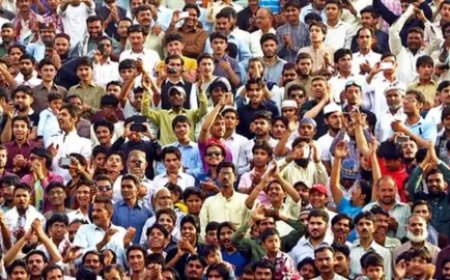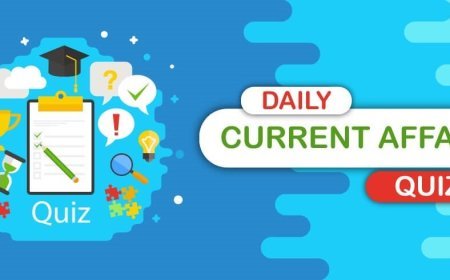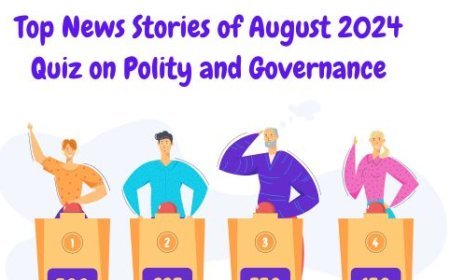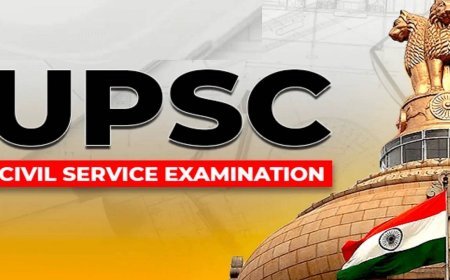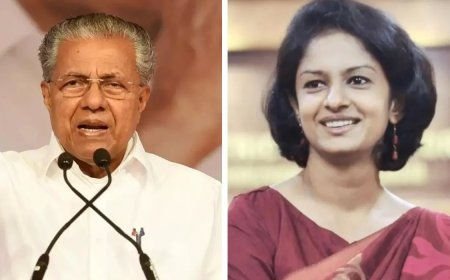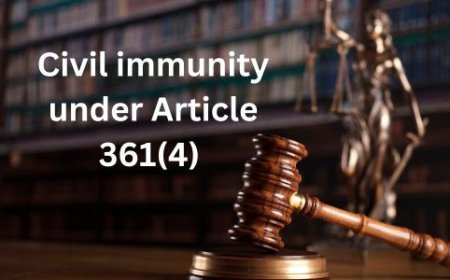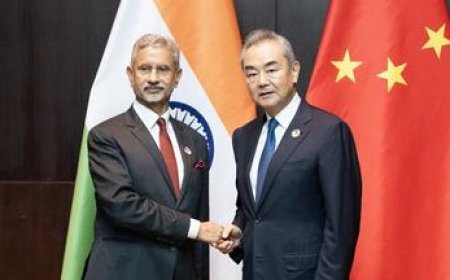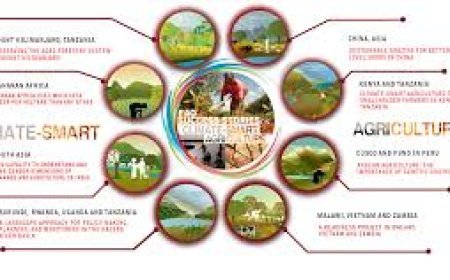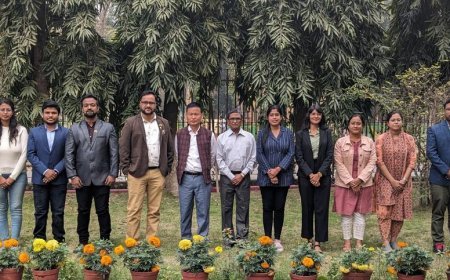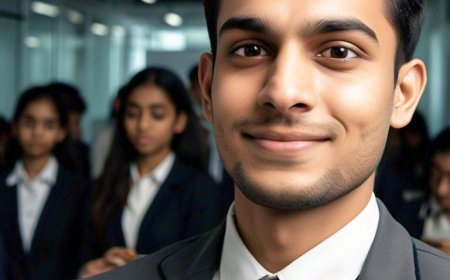Master your Monthly Current Affairs of July 2024

Master your Monthly Current Affairs of July 2024
1) Which of the following is a key focus area in the Budget 2024-25 as highlighted under Priority-1?
A) Infrastructure Development
B) Digital Public Infrastructure for Agriculture
C) Education Reforms
D) Renewable Energy Initiatives
Answer: B) Digital Public Infrastructure for Agriculture
Explanation: The Budget 2024-25 places significant emphasis on Digital Public Infrastructure (DPI) for Agriculture as a part of Priority 1, which focuses on productivity and resilience in agriculture. The DPI aims to cover farmers and their lands, facilitating digital crop surveys and the issuance of Kisan Credit Cards in specific states.
2) The Scheme A under Employment & Skilling announced in the Budget 2024-25 aims to:
A) Provide incentives for employers hiring first-time employees in the manufacturing sector.
B) Offer wage subsidies to new entrants in the workforce across all formal sectors.
C) Fund internships in top companies for students.
D) Promote skilling programs for women in rural areas.
Answer: B) Offer wage subsidies to new entrants in the workforce across all formal sectors.
Explanation: Scheme A, termed "First Timers," is designed to support individuals newly entering the workforce in formal sectors. It provides a direct benefit transfer of one-month salary up to ₹15,000, distributed in three instalments, to first-time employees as registered in the Employees’ Provident Fund Organisation (EPFO). This subsidy aids in easing the transition for new workers before they become fully productive.
3) What is the primary focus of the Union Budget 2024-25 under the theme ‘Viksit Bharat’?
A) Strengthening Defence Infrastructure
B) Employment, Skilling, MSMEs, and the Middle class
C) Enhancing Digital Infrastructure
D) Promoting Renewable Energy
Answer: B) Employment, Skilling, MSMEs, and the Middle class
Explanation: The Union Budget 2024-25 has a specific focus on Employment, Skilling, MSMEs, and the Middle class, aiming for sustained efforts across key priorities to generate opportunities for all, in pursuit of a ‘Viksit Bharat.’
4) Which sector received an allocation of Rs 1.52 lakh crore in the Budget 2024-25?
A) Defence
B) Education
C) Agriculture and Allied Sectors
D) Health
Answer: C) Agriculture and Allied Sectors
Explanation: The Budget 2024-25 allocated Rs 1.52 lakh crore for agriculture and allied sectors to support initiatives like natural farming, self-sufficiency in pulses and oilseeds, and establishing bio-input resource centres.
5) Which type of income tax regime simplifications were highlighted in the Union Budget 2024-25?
A) Tax reductions for high-income earners
B) Introduction of new exemptions and deductions
C) Simplification of tax regimes without exemptions and deductions
D) Increased tax rates across all slabs
Answer: C) Simplification of tax regimes without exemptions and deductions
Explanation: The Budget 2024-25 emphasizes simplifying tax regimes by reducing exemptions and deductions, making it easier for taxpayers to comply with and understand the tax system.
6) Which tax was abolished in the Union Budget 2024-25 to strengthen the Indian start-up ecosystem?
A) Capital Gains Tax
B) Securities Transaction Tax
C) Angel Tax
D) Corporate Tax
Answer: C) Angel Tax
Explanation: The Union Budget 2024-25 abolished the Angel Tax for all classes of investors, aiming to strengthen the Indian start-up ecosystem, boost entrepreneurial spirit, and support innovation.
7) Scheme B under the Employment & Skilling section of Budget 2024-25 focuses on which sector?
A) Information Technology
B) Agriculture
C) Manufacturing
D) Healthcare
Answer: C) Manufacturing
Explanation: Scheme B specifically targets the manufacturing sector, incentivizing additional employment and substantial hiring of first-time employees in this sector.
8) Which scheme under the Employment & Skilling section aims to provide internships to youth in top companies?
A) Scheme A: First Timers
B) Scheme D: Skilling
C) Scheme E: Internship
D) Scheme C: Support to Employers
Answer: C) Scheme E: Internship
Explanation: Scheme E focuses on providing internship opportunities to youth in top companies, offering them real-life business environment exposure, with an internship allowance and training costs partly covered by participating companies.
9) What is the aim of the Purvodaya initiative under the Budget 2024-25?
A) To develop new IT hubs in the southern states
B) To transform the eastern region of India into a growth engine
C) To build more smart cities in the western states
D) To improve healthcare in the northern states
Answer: B) To transform the eastern region of India into a growth engine
Explanation: The Purvodaya initiative aims to transform the eastern region, including states like Bihar, Jharkhand, West Bengal, Odisha, and Andhra Pradesh, into a growth engine through industrial development and infrastructure projects.
10) Which project in Andhra Pradesh is highlighted for timely completion in the Budget 2024-25?
A) Krishna River Project
B) Polavaram Irrigation Project
C) Godavari Water Project
D) Visakhapatnam Industrial Project
Answer: B) Polavaram Irrigation Project
Explanation: The Budget emphasizes the timely completion of the Polavaram Irrigation Project, which is vital for supporting the state's farmers and enhancing food security in Andhra Pradesh.
11) What is the purpose of the Credit Guarantee Scheme for MSMEs announced in the Budget 2024-25?
A) To provide direct subsidies to MSMEs
B) To facilitate term loans for MSMEs without collateral
C) To reduce taxes for MSMEs
D) To fund marketing campaigns for MSMEs
Answer: B) To facilitate term loans for MSMEs without collateral
Explanation: The Credit Guarantee Scheme for MSMEs is designed to facilitate term loans for purchasing machinery and equipment without requiring collateral, thereby supporting their growth and competitiveness.
12) Which new mechanism was introduced to support MSMEs during their stress period?
A) Direct cash transfers
B) Reduction in corporate taxes
C) Continuation of bank credit with government guarantee
D) Exemption from export duties
Answer: C) Continuation of bank credit with government guarantee
Explanation: A new mechanism was introduced to ensure the continuation of bank credit to MSMEs during stress periods, supported by a government-promoted guarantee fund.
13) What is the objective of the PM Awas Yojana Urban 2.0 under Budget 2024-25?
A) To provide rural housing
B) To improve urban infrastructure
C) To address the housing needs of 1 crore urban poor and middle-class families
D) To build new smart cities
Answer: C) To address the housing needs of 1 crore urban poor and middle-class families
Explanation: PM Awas Yojana Urban 2.0 is focused on addressing the housing needs of 1 crore urban poor and middle-class families with significant investment and central assistance over the next five years.
14) Which type of accommodation is being facilitated in PPP mode for industrial workers under the Budget 2024-25?
A) Luxury Apartments
B) Rental Housing with Dormitory-type accommodation
C) Subsidized Villas
D) Smart Housing Units
Answer: B) Rental Housing with Dormitory-type accommodation
Explanation: The Budget facilitates the development of rental housing with dormitory-type accommodations for industrial workers through Public-Private Partnership (PPP) mode, along with Viability Gap Funding (VGF).
15) What new policy was announced in the Budget 2024-25 for integrating renewable energy with the national grid?
A) Solar Power Expansion
B) Wind Energy Development
C) Pumped Storage Policy
D) Bioenergy Implementation
Answer: C) Pumped Storage Policy
Explanation: A new Pumped Storage Policy was announced to promote electricity storage and smooth integration of the growing share of renewable energy into the national grid, addressing the variable nature of renewable sources.
16) Which joint venture is proposed in the Budget 2024-25 to set up a commercial plant using Advanced Ultra Super Critical (AUSC) technology?
A) NTPC and BHEL
B) ONGC and GAIL
C) Reliance and Adani
D) Tata and Larsen & Toubro
Answer: A) NTPC and BHEL
Explanation: A joint venture between NTPC and BHEL is proposed to set up a full-scale 800 MW commercial plant using Advanced Ultra Super Critical (AUSC) technology, with government fiscal support.
17) What is the purpose of the Anusandhan National Research Fund as proposed in the Budget 2024-25?
A) To fund agricultural research
B) To support private sector-driven R&D
C) To subsidize scientific education
D) To build new universities
Answer: B) To support private sector-driven R&D
Explanation: The Anusandhan National Research Fund is aimed at supporting private sector-driven research and innovation at a commercial scale, with a substantial financing pool to encourage development.
18) Which industry is targeted for significant growth through the Space Economy initiative in the Budget 2024-25?
A) Telecommunications
B) Pharmaceuticals
C) Space Exploration
D) Automotive Manufacturing
Answer: C) Space Exploration
Explanation: The Space Economy initiative targets significant growth in the space exploration industry, with a venture capital fund established to expand the space economy by five times in the next ten years.
19) What new structure is proposed in the Budget 2024-25 to support leasing aircraft and ships?
A) Limited Liability Company
B) Special Economic Zones
C) Variable Capital Company
D) International Trade Zones
Answer: C) Variable Capital Company
Explanation: The Variable Capital Company structure is proposed to provide a flexible financing mode for leasing aircraft and ships, supporting private equity pooled funds.
20) Which sector is prioritized for reforms under the Next Generation Reforms in the Budget 2024-25?
A) Agriculture
B) Real Estate
C) Financial Sector
D) Education
Answer: C) Financial Sector
Explanation: The Budget 2024-25 prioritizes the financial sector for reforms, including the release of a strategy document outlining future vision, addressing size, capacity, and skills.
21) According to the Annual Survey of Unincorporated Enterprises (ASUSE) for 2021-22 and 2022-23, which sector saw the most significant decline in the number of units?
A) Services
B) Manufacturing
C) Trade
D) Agriculture
Answer: B) Manufacturing
Explanation: The Manufacturing sector experienced a significant decline, contracting by 9.3% between 2022-23 and 2015-16, making it the hardest-hit sector in terms of the number of units.
22) What trend was observed in employment within the informal sector according to ASUSE 2021-22 and 2022-23?
A) Increase in hired-worker enterprises
B) Decrease in own-account enterprises
C) Decline in total workers employed
D) Growth in employment in manufacturing
Answer: C) Decline in total workers employed
Explanation: The survey indicated a decline in total workers employed in the informal sector, with the number of workers dropping by 1.5% to 10.96 crore in 2022-23 from 11.13 crore in 2015-16.
23) Which of the following articles of the Indian Constitution supports the right to education?
A) Article 21
B) Article 15
C) Article 25
D) Article 30
Answer: A) Article 21
Explanation: Article 21A of the Indian Constitution provides the right to education, ensuring free and compulsory education for children between 6 and 14 years of age.
24) One argument against bringing education back to the State List is:
A) Increased expenditure by the states
B) Lack of professionalism and corruption at the state level
C) The central government’s reduced role in policy-making
D) Increased flexibility in curriculum design
Answer: B) Lack of professionalism and corruption at the state level
Explanation: One of the arguments against moving education back to the State List is the concern over lack of professionalism and corruption at the state level, which could lead to issues like paper leaks and exam delays.
25) Who has the authority to expunge remarks from the parliamentary records?
A) The Prime Minister
B) The President
C) The Speaker/Presiding Officer
D) The Leader of the Opposition
Answer: C) The Speaker/Presiding Officer
Explanation: The Speaker or Presiding Officer of the House has the authority to expunge remarks deemed unparliamentary or inappropriate from the official parliamentary records.
26) Which of the following is NOT a valid reason for expunging a remark from parliamentary records?
A) The remark is prejudicial to national interest
B) The remark discredits the Army
C) The remark supports government policies
D) The remark is derogatory to dignitaries
Answer: C) The remark supports government policies
Explanation: Remarks are expunged if they are prejudicial to national interest, derogatory to dignitaries, or discredit institutions like the Army. Supporting government policies would not be a reason for expunction.
27) Under the All-India Services (Conduct) Rules, 1968, what is the threshold value above which an IAS officer must report gifts received?
A) ₹10,000
B) ₹15,000
C) ₹20,000
D) ₹25,000
Answer: D) ₹25,000
Explanation: IAS officers must report gifts to the government if their value exceeds ₹25,000, according to the All-India Services (Conduct) Rules, 1968.
28) Which rule allows for the discharge of a probationary IAS officer if found unsuitable for service?
A) All India Services (Conduct) Rules, 1968
B) Indian Administrative Service (Probation) Rules, 1954
C) Indian Civil Services Examination Rules
D) Government of India Act
Answer: B) Indian Administrative Service (Probation) Rules, 1954
Explanation: Under the Indian Administrative Service (Probation) Rules, 1954, a probationary officer can be discharged from duty if found unsuitable for service or lacking the necessary qualities of mind and character.
29) Which article of the Indian Constitution mandates the appointment of a commission to investigate the conditions of socially and educationally backward classes?
A) Article 14
B) Article 15
C) Article 340
D) Article 370
Answer: C) Article 340
Explanation: Article 340 of the Indian Constitution mandates the appointment of a commission to investigate the conditions of socially and educationally backward classes, supporting the rationale for a caste census.
30) What was a key issue that led to the failure of the Socio-Economic and Caste Census (SECC) of 2011?
A) Overestimation of caste groups
B) Inaccurate population data
C) Poorly designed naire
D) Lack of funding
Answer: C) Poorly designed naire
Explanation: The SECC 2011 faced criticism for its poorly designed naire, which led to confusion and inaccuracies in the collection and reporting of caste data.
31) What was the Supreme Court's ruling regarding the state's power to tax mining lands and quarries in 2024?
A) The power is limited by the MMDR Act
B) The power is independent of the MMDR Act
C) The power is granted solely to the Union Government
D) The power is abolished by the 2024 ruling
Answer: B) The power is independent of the MMDR Act
Explanation: The Supreme Court ruled that state legislatures' power to tax mining lands and quarries is independent of the MMDR Act of 1957, allowing states to generate additional revenue through such taxes.
32) Which Act governs the mining sector in India and was central to the 2024 Supreme Court case?
A) Land Acquisition Act
B) Environment Protection Act
C) Mines and Minerals (Development and Regulation) Act, 1957
D) Indian Mining Act
Answer: C) Mines and Minerals (Development and Regulation) Act, 1957
Explanation: The Mines and Minerals (Development and Regulation) Act, 1957, governs the mining sector in India and was a key focus in the 2024 Supreme Court ruling on state taxation powers.
33) What new structure did the Budget 2024-25 propose to support foreign investments and promote the use of the Indian Rupee in overseas investments?
A) Sovereign Wealth Fund
B) Variable Capital Company Structure
C) Foreign Investment Board
D) National Investment Fund
Answer: B) Variable Capital Company Structure
Explanation: The Variable Capital Company Structure was proposed to facilitate flexible financing for leasing aircraft and ships, and to promote the use of the Indian Rupee in overseas investments.
34) Which of the following is NOT a focus of the Financial Sector Vision and Strategy outlined in the Budget 2024-25?
A) Developing a taxonomy for climate finance
B) Enhancing data governance
C) Increasing subsidies for small-scale industries
D) Strengthening the IBC ecosystem
Answer: C) Increasing subsidies for small-scale industries
Explanation: The focus areas include developing a taxonomy for climate finance, enhancing data governance, and strengthening the Insolvency and Bankruptcy Code (IBC) ecosystem. Increasing subsidies for small-scale industries is not highlighted in this section.
35) Which tax was reduced on gold and silver in the Budget 2024-25?
A) Income Tax
B) Goods and Services Tax (GST)
C) Customs Duties
D) Excise Duty
Answer: C) Customs Duties
Explanation: The Budget 2024-25 proposed a reduction in customs duties on gold and silver to 6%, aiming to make these precious metals more affordable.
36) Which of the following changes were made to the TDS (Tax Deducted at Source) rules in the Budget 2024-25?
A) Increase in TDS rate for freelancers
B) Reduction of TDS rate on e-commerce operators from 1% to 0.1%
C) Introduction of TDS on all bank withdrawals
D) Elimination of TDS for charitable donations
Answer: B) Reduction of TDS rate on e-commerce operators from 1% to 0.1%
Explanation: The Budget 2024-25 proposed a reduction in the TDS rate for e-commerce operators from 1% to 0.1%, easing the compliance burden on these businesses.
37) What is the main objective of the water supply and sanitation projects proposed in the Budget 2024-25?
A) To provide free water to all households
B) To promote water supply and sanitation projects in 100 large cities
C) To privatize the water supply sector
D) To eliminate water subsidies
Answer: B) To promote water supply and sanitation projects in 100 large cities
Explanation: The Budget 2024-25 proposed to promote water supply, sewage treatment, and solid waste management projects in 100 large cities, focusing on improving the quality of life in urban areas.
38) Which of the following is a part of the proposed water supply and sanitation projects?
A) Building new dams across the country
B) Developing rural water distribution networks
C) Using treated water for irrigation and filling up tanks
D) Expanding hydroelectric power plants
Answer: C) Using treated water for irrigation and filling up tanks
Explanation: The water supply and sanitation projects include using treated water for irrigation and filling up tanks, aiming to improve water resource management.
39) Which article of the Indian Constitution provides MPs with the freedom of speech in Parliament?
A) Article 19
B) Article 21
C) Article 105
D) Article 226
Answer: C) Article 105
Explanation: Article 105 of the Indian Constitution confers on Members of Parliament (MPs) the freedom of speech in the House, subject to other constitutional provisions and the rules of each house.
40) What happens to remarks made in Parliament that are expunged by the Speaker?
A) They are published in a separate record
B) They are marked with asterisks and removed from the official record
C) They are highlighted in the next session of Parliament
D) They are automatically shared on social media
Answer: B) They are marked with asterisks and removed from the official record
Explanation: Expunged remarks are marked with asterisks and an explanatory footnote, indicating that they were removed from the official parliamentary record by order of the Speaker.
41) What is the primary goal of the SWAYAM program?
A) To build physical schools in remote areas
B) To take the best teaching-learning resources to all, including the most disadvantaged
C) To provide free meals to students
D) To fund research in educational technology
Answer: B) To take the best teaching-learning resources to all, including the most disadvantaged
Explanation: The SWAYAM program aims to make high-quality teaching-learning resources available to everyone, particularly the most disadvantaged, through an online platform.
42) Which program under the Budget 2024-25 is aimed at helping students prepare for competitive examinations?
A) DIKSHA
B) SATHEE
C) SWAYAM
D) National E-Library
Answer: B) SATHEE
Explanation: The SATHEE (Self-Assessment, Test, and Help for Entrance Examination) portal is designed to offer quality education to students preparing for competitive examinations.
43) Which census year was the last to include full caste enumeration before it was discontinued in Independent India?
A) 1881
B) 1931
C) 1951
D) 1971
Answer: B) 1931
Explanation: The 1931 Census was the last to include full caste enumeration before the practice was discontinued in Independent India.
44) Why has the Government of India decided not to enumerate caste-wise population other than SCs and STs in recent censuses?
A) To avoid reinforcing caste divisions
B) Due to lack of funding
C) To simplify the census process
D) Due to technical challenges
Answer: A) To avoid reinforcing caste divisions
Explanation: The Government of India decided not to enumerate caste-wise population other than SCs and STs in recent censuses to avoid strengthening caste divisions and perpetuating the caste system.
45) Which court ruling allowed states to tax mining lands and quarries independently of the MMDR Act?
A) Delhi High Court
B) Supreme Court
C) Madras High Court
D) Bombay High Court
Answer: B) Supreme Court
Explanation: The Supreme Court of India ruled that states could tax mining lands and quarries independently of the Mines and Minerals (Development and Regulation) Act, 1957, allowing them to generate additional revenues.
46) Which Act governs the mining sector in India and was central to the 2024 Supreme Court ruling?
A) Land Acquisition Act
B) Environment Protection Act
C) Mines and Minerals (Development and Regulation) Act, 1957
D) Indian Mining Act
Answer: C) Mines and Minerals (Development and Regulation) Act, 1957
Explanation: The Mines and Minerals (Development and Regulation) Act, 1957, governs the mining sector in India and was a key focus in the 2024 Supreme Court ruling on state taxation powers.
47) The Indigenous Light Tank Zorawar, developed by DRDO and L&T, is primarily designed to operate in which type of environment?
A) Desert terrains
B) High-altitude and extreme weather conditions
C) Urban warfare
D) Underwater environments
Answer: B) High-altitude and extreme weather conditions
Explanation: The Zorawar light tank is specifically designed to operate in high-altitude regions and extreme weather conditions, particularly along India's northern border. This design was driven by the need to counter similar light tanks deployed by China during the standoff in Eastern Ladakh.
48) Which engine is being developed by DRDO for the Indigenous Light Tank Zorawar?
A) 2000 HP Engine
B) 1500 HP Engine
C) 1400 HP Engine
D) 1200 HP Engine
Answer: C) 1400 HP Engine
Explanation: DRDO is working on developing a new 1400 HP engine for the Arjun Mk1A main battle tank, and similar advancements are expected to be integrated into the Zorawar light tank, enhancing its operational capabilities in rugged terrains.
49) Which ministry currently has administrative control over the Computer Emergency Response Team (CERT-IN)?
A) Ministry of Home Affairs
B) Ministry of Defence
C) Ministry of Electronics and Information Technology
D) Ministry of Communications
Answer: C) Ministry of Electronics and Information Technology
Explanation: The Computer Emergency Response Team (CERT-IN) operates under the administrative control of the Ministry of Electronics and Information Technology (MeitY). It is responsible for responding to cybersecurity incidents and enhancing the security of India's communications and information infrastructure.
50) What is the primary function of CERT-IN as per the Information Technology Amendment Act, 2008?
A) Conducting cyber warfare exercises
B) Responding to computer security incidents
C) Regulating online content
D) Issuing software licenses
Answer: B) Responding to computer security incidents
Explanation: CERT-IN, as per the Information Technology Amendment Act, 2008, is designated as the national nodal agency responsible for responding to computer security incidents as they occur and enhancing the security of India's communications and information infrastructure.
51) What is the primary objective of India's Defence Production and Export Promotion Policy (DPEPP) 2020?
A) To import high-tech defence equipment from foreign manufacturers
B) To achieve a turnover of ₹1.75 lakh crore in aerospace and defence goods and services by 2025
C) To reduce the defence budget by 50%
D) To phase out the public sector from defence manufacturing
Answer: B) To achieve a turnover of ₹1.75 lakh crore in aerospace and defence goods and services by 2025
Explanation: The Defence Production and Export Promotion Policy (DPEPP) 2020 aims to achieve a turnover of ₹1.75 lakh crore in aerospace and defence goods and services by 2025, including exports of ₹35,000 crore. This policy is part of the broader effort to promote self-reliance in defence production.
52) Which initiative under the Defence Production and Export Promotion Policy (DPEPP) promotes collaboration between Indian private companies and foreign original equipment manufacturers (OEMs)?
A) Defence Offset Policy
B) Strategic Partnership Model
C) iDEX Initiative
D) Ordnance Factory Board (OFB) Corporatization
Answer: B) Strategic Partnership Model
Explanation: The Strategic Partnership Model under the DPEPP encourages collaboration between Indian private companies and foreign original equipment manufacturers (OEMs) to set up manufacturing facilities in India, fostering technology transfer and capability building in the defence sector.
53) The Mainland Serow, a vulnerable mammal species, has been sighted in which National Park that shares its northern border with Bhutan's Phibsoo Wildlife Sanctuary?
A) Kaziranga National Park
B) Raimona National Park
C) Namdapha National Park
D) Manas National Park
Answer: B) Raimona National Park
Explanation: Raimona National Park, located in Assam, shares its northern border with Bhutan's Phibsoo Wildlife Sanctuary. It is in this park that the Mainland Serow, a vulnerable mammal species recognized by the IUCN, has been sighteddefence
54) The Shyok River, where Indian army personnel died crossing, is a tributary of which major river?
A) Ganges
B) Brahmaputra
C) Indus
D) Yamuna
Answer: C) Indus
Explanation: The Shyok River, which originates at the Rimo Glacier in the Karakoram Range in Ladakh, is a tributary of the Indus River. This river was in the news due to a tragic incident involving Indian army personnel
55) The 2nd BIMSTEC Foreign Ministers' Retreat was held in which city?
A) Bangkok
B) New Delhi
C) Colombo
D) Dhaka
Answer: B) New Delhi
Explanation: The 2nd Retreat of the Foreign Ministers of the Bay of Bengal Initiative for Multi-Sectoral Technical and Economic Cooperation (BIMSTEC) was hosted by India in New Delhi
56) Which of the following is NOT a priority sector under BIMSTEC?
A) Energy
B) Tourism
C) Healthcare
D) Technology
Answer: C) Healthcare
Explanation: The priority sectors under BIMSTEC include Trade and Investment, Technology, Energy, Transportation, Tourism, Agriculture, and Fisheries, but Healthcare is not explicitly listed as a priority sector
57) Which state was the first to publish the first volume of the People’s Biodiversity Register (PBR) across all local bodies?
A) Tamil Nadu
B) Kerala
C) Karnataka
D) Maharashtra
Answer: B) Kerala
Explanation: Kerala was the first state to publish the first volume of the People’s Biodiversity Register (PBR) across all local bodies. The PBR is a comprehensive record of biodiversity, including flora, fauna, habitats, domesticated animals, microorganisms, and local biological knowledge
58)What is the primary goal of Mission LiFE concerning the People’s Biodiversity Register (PBR)?
A) To increase the number of protected areas in India
B) To create a PBR in every village in India
C) To promote international collaboration on biodiversity
D) To digitize all existing PBRs
Answer: B) To create a PBR in every village in India
Explanation: Mission LiFE (Lifestyle for the Environment) aims to create a People’s Biodiversity Register (PBR) in every village in India. This initiative is intended to document and preserve the rich biodiversity at the grassroots level across the country defence
59) What is the primary objective of the Rhisotope Project?
A) To genetically modify rhino horns
B) To track and protect endangered rhinos by making their horns radioactive
C) To increase the population of rhinos in Africa
D) To replace rhino horns with synthetic alternatives
Answer: B) To track and protect endangered rhinos by making their horns radioactive
Explanation: The Rhisotope Project involves inserting measured quantities of radioisotopes into the horns of live rhinos. This makes the horns radioactive, rendering them useless and poisonous for human consumption, thereby protecting rhinos from poaching. The radioactive material also allows the movement of the horns to be tracked globally defence
60) Which animal species might the Rhisotope Project expand to in the future?
A) Tigers and Leopards
B) Elephants and Pangolins
C) Lions and Bears
D) Sharks and Whales
Answer: B) Elephants and Pangolins
Explanation: The Rhisotope Project, which currently focuses on rhinos, plans to expand its efforts to include elephants, pangolins, and other fauna and flora in the futuredefence
61) Which country is collaborating with India on the Space MAITRI mission?
A) United States
B) Russia
C) Australia
D) Japan
Answer: C) Australia
Explanation: The Space MAITRI mission is a collaboration between New Space India Limited (NSIL) and Australia’s Space Machines Company. This mission aims to foster closer ties between private and governmental space organizations from both countries, focusing on sustainable space exploration and debris management defence
62) What is the primary goal of the Space MAITRI mission?
A) Launching manned space missions
B) Establishing a lunar base
C) Promoting sustainable space exploration and debris management
D) Developing a space tourism industry
Answer: C) Promoting sustainable space exploration and debris management
Explanation: The Space MAITRI mission's primary goal is to promote sustainable space exploration and effective management of space debris through collaboration between Indian and Australian space organizations defence
63) Which country incorporated 3D hologram technology in its banknotes to combat counterfeiting?
A) United States
B) Japan
C) Germany
D) South Korea
Answer: B) Japan
Explanation: Japan incorporated 3D hologram technology into its yen banknotes to enhance security features and combat counterfeiting. This technology creates lifelike, three-dimensional images that can be viewed from different anglesdefence
64) In which of the following fields can 3D hologram technology be used, as mentioned in the document?
A) Medical Training
B) Agricultural Surveys
C) Automotive Design
D) Environmental Conservation
Answer: A) Medical Training
Explanation: 3D hologram technology can be utilized in the field of medicine for purposes like medical training, such as simulating surgeries or other procedures. It allows for more interactive and realistic training experiences defence
65) What is the primary application of Virus-Like Particles (VLPs) in modern medicine?
A) Gene therapy
B) Vaccination
C) Antibiotic resistance testing
D) Cancer treatment
Answer: B) Vaccination
Explanation: Virus-Like Particles (VLPs) are primarily used in modern medicine as a basis for vaccines. They mimic the structure of viruses but lack the viral genetic material, making them safe and effective for stimulating an immune response
66) Which virus has been targeted using VLPs for a successful vaccine development?
A) HIV
B) Hepatitis B
C) Influenza
D) Dengue
Answer: B) Hepatitis B
Explanation: The Hepatitis B vaccine is one of the most successful applications of VLP technology. VLPs mimic the Hepatitis B virus, helping the body to develop immunity without causing the disease
67) The TRISHNA mission, a joint Indo-French project, is primarily focused on what area of study?
A) Oceanic exploration
B) Thermal infrared imaging for studying Earth's water cycle
C) Deep space exploration
D) Earthquake prediction
Answer: B) Thermal infrared imaging for studying Earth's water cycle
Explanation: The TRISHNA mission is focused on thermal infrared imaging to study the Earth's water cycle. This joint Indo-French mission aims to enhance our understanding of water stress, agricultural output, and climate change impacts by observing thermal emissions from the Earth's surface
68) Which two space agencies are collaborating on the TRISHNA mission?
A) NASA and ISRO
B) CNES and ISRO
C) ESA and JAXA
D) ROSCOSMOS and CNSA
Answer: B) CNES and ISRO
Explanation: The TRISHNA mission is a collaborative effort between the Indian Space Research Organisation (ISRO) and the French space agency CNES (Centre National d'Études Spatiales)
69) Which of the following principles is NOT part of the Panchsheel agreement between India and China?
A) Mutual respect for each other's territorial integrity and sovereignty
B) Mutual non-aggression
C) Support for military alliances
D) Peaceful co-existence
Answer: C) Support for military alliances
Explanation: The Panchsheel agreement between India and China is based on five principles, which include mutual respect for each other's territorial integrity and sovereignty, mutual non-aggression, non-interference in each other's internal affairs, equality and mutual benefit, and peaceful co-existence. Support for military alliances is not one of the principles
70) In which year were the Panchsheel principles formally agreed upon between India and China?
A) 1950
B) 1954
C) 1962
D) 1971
Answer: B) 1954
Explanation: The Panchsheel principles were formally agreed upon between India and China in 1954 as part of the Agreement on Trade and Intercourse between the Tibet region of China and India
71) The role of the National Security Advisor (NSA) in India includes which of the following responsibilities?
A) Conducting all foreign diplomatic missions
B) Overseeing national intelligence coordination
C) Managing economic policies
D) Leading military operations directly
Answer: B) Overseeing national intelligence coordination
Explanation: The National Security Advisor (NSA) in India plays a crucial role in overseeing national intelligence coordination, advising the Prime Minister on security matters, and leading the National Security Council Secretariat. The NSA does not conduct foreign diplomatic missions or lead military operations directly
72) Who was the first NSA of India, appointed in 1998?
A) M.K. Narayanan
B) Ajit Doval
C) J.N. Dixit
D) Brajesh Mishra
Answer: D) Brajesh Mishra
Explanation: Brajesh Mishra was the first National Security Advisor (NSA) of India, appointed in 1998 during the tenure of Prime Minister Atal Bihari Vajpayee
73) Which organization publishes the Global Gender Gap Index annually?
A) United Nations
B) World Economic Forum (WEF)
C) World Bank
D) International Labour Organization
Answer: B) World Economic Forum (WEF)
Explanation: The Global Gender Gap Index is published annually by the World Economic Forum (WEF) to assess gender equality across countries based on economic, political, education, and health-based criteria
74) As of 2024, which country ranked highest in the Global Gender Gap Index?
A) Norway
B) Iceland
C) Finland
D) Sweden
Answer: B) Iceland
Explanation: Iceland has consistently ranked as the top country in the Global Gender Gap Index due to its strong performance in gender equality across various dimensions
75) What is the primary goal of the High Seas Biodiversity Treaty?
A) To regulate deep-sea mining
B) To ensure the sustainable use of marine resources in international waters
C) To promote tourism in coastal regions
D) To protect the interests of fishing communities
Answer: B) To ensure the sustainable use of marine resources in international waters
Explanation: The High Seas Biodiversity Treaty aims to ensure the sustainable use of marine resources in international waters and to protect the biodiversity of areas beyond national jurisdiction
76) Which international body is responsible for negotiating the High Seas Biodiversity Treaty?
A) United Nations
B) International Maritime Organization
C) World Trade Organization
D) Arctic Council
Answer: A) United Nations
Explanation: The High Seas Biodiversity Treaty is being negotiated under the auspices of the United Nations, focusing on the protection and sustainable use of marine biodiversity in areas beyond national jurisdiction
77) What unique feature do bioluminescent mushrooms possess?
A) They can change color based on temperature
B) They emit light naturally
C) They can grow in any climate
D) They produce high levels of oxygen
Answer: B) They emit light naturally
Explanation: Bioluminescent mushrooms are unique in that they emit light naturally due to a chemical reaction involving luciferin, which is found within the mushroom cells
78) In which region were new species of bioluminescent mushrooms recently discovered?
A) Amazon Rainforest
B) Western Ghats of India
C) Canadian Rockies
D) Siberian Taiga
Answer: B) Western Ghats of India
Explanation: New species of bioluminescent mushrooms were recently discovered in the Western Ghats of India, adding to the diversity of known bioluminescent organisms
79) Which international treaty aims to eliminate or restrict the production and use of Persistent Organic Pollutants (POPs)?
A) Paris Agreement
B) Stockholm Convention
C) Kyoto Protocol
D) Montreal Protocol
Answer: B) Stockholm Convention
Explanation: The Stockholm Convention is an international treaty that aims to eliminate or restrict the production and use of Persistent Organic Pollutants (POPs) due to their harmful effects on health and the environment
80) What characteristic makes Persistent Organic Pollutants particularly dangerous to the environment?
A) They dissolve easily in water
B) They break down quickly in the environment
C) They persist in the environment for long periods and bioaccumulate
D) They are easily neutralized by sunlight
Answer: C) They persist in the environment for long periods and bioaccumulate
Explanation: Persistent Organic Pollutants (POPs) are particularly dangerous because they persist in the environment for long periods, bioaccumulate in the food chain, and can cause significant health and environmental damage
81) Which pollutant was identified as the leading cause of premature deaths worldwide in the State of Global Air Report 2024?
A) Ozone
B) Nitrogen Dioxide
C) Particulate Matter (PM2.5)
D) Sulphur Dioxide
Answer: C) Particulate Matter (PM2.5)
Explanation: The State of Global Air Report 2024 identified Particulate Matter (PM2.5) as the leading cause of premature deaths globally. PM2.5 particles are small enough to penetrate deep into the lungs and even enter the bloodstream, causing serious health issues
81) According to the State of Global Air Report 2024, which region of the world has the highest exposure to PM2.5?
A) North America
B) Western Europe
C) South Asia
D) Oceania
Answer: C) South Asia
Explanation: South Asia, particularly countries like India and Pakistan, has the highest exposure to PM2.5, leading to severe health impacts in the population. The report highlights the urgent need for air quality improvements in this region
82) What are technical textiles primarily used for?
A) Fashion clothing
B) Home décor
C) Industrial and specialized applications
D) Casual wear
Answer: C) Industrial and specialized applications
Explanation: Technical textiles are materials and products used for their technical performance and functional properties rather than aesthetic characteristics. They are widely used in industries such as automotive, construction, healthcare, and agriculture
83) Which of the following is NOT a category of technical textiles?
A) Geotextiles
B) Meditextiles
C) Agrotech
D) Nanotextiles
Answer: D) Nanotextiles
Explanation: The primary categories of technical textiles include Geotextiles, Meditextiles (medical textiles), and Agrotech (agricultural textiles). "Nanotextiles" is not recognized as a specific category within technical textiles, though nanotechnology may be applied in the production of technical textiles
84) What was the primary reason for OPEC+ extending oil output cuts into 2025?
A) To increase global oil supply
B) To stabilize oil prices
C) To support renewable energy initiatives
D) To reduce environmental pollution
Answer: B) To stabilize oil prices
Explanation: OPEC+ extended oil output cuts into 2025 primarily to stabilize global oil prices in response to fluctuations in demand and supply dynamics. The cuts aim to prevent an oversupply of oil, which could lead to a significant drop in prices
85) Which country is the leading member of OPEC and plays a key role in the decision-making process regarding oil output?
A) Russia
B) United States
C) Saudi Arabia
D) Iran
Answer: C) Saudi Arabia
Explanation: Saudi Arabia is the leading member of OPEC and plays a crucial role in the organization's decision-making processes, particularly regarding oil output levels and pricing strategies
86) Which two countries are signatories to the Indus Water Treaty, which governs the sharing of river waters?
A) India and China
B) India and Pakistan
C) India and Nepal
D) India and Bangladesh
Answer: B) India and Pakistan
Explanation: The Indus Water Treaty is a water-distribution agreement signed between India and Pakistan in 1960. It governs the use and management of the Indus River system's waters, with both countries having rights over different rivers within the system
87) What is the role of the Permanent Indus Commission under the Indus Water Treaty?
A) To manage hydropower projects on the Indus River
B) To resolve disputes and monitor the implementation of the treaty
C) To allocate financial resources for river management
D) To develop irrigation projects for both countries
Answer: B) To resolve disputes and monitor the implementation of the treaty
Explanation: The Permanent Indus Commission is a bilateral commission established under the Indus Water Treaty to resolve disputes and ensure the treaty's implementation. The commission facilitates cooperation between India and Pakistan on matters related to the Indus River system
88) The GST Council in India is responsible for making decisions related to which of the following?
A) Setting income tax rates
B) Formulating policies for the Goods and Services Tax (GST)
C) Regulating foreign trade
D) Managing state finances
Answer: B) Formulating policies for the Goods and Services Tax (GST)
Explanation: The GST Council is responsible for making key decisions regarding the formulation and implementation of Goods and Services Tax (GST) policies in India. It is a constitutional body that oversees the GST regime in the country
89) Who chairs the GST Council?
A) The Prime Minister of India
B) The Finance Minister of India
C) The President of India
D) The Chief Justice of India
Answer: B) The Finance Minister of India
Explanation: The GST Council is chaired by the Finance Minister of India. The council includes representatives from the central and state governments and is responsible for making decisions on GST-related matters
90) What was the primary objective of the Human Genome Project (HGP)?
A) To cure genetic diseases
B) To map all the genes in the human genome
C) To create genetically modified organisms
D) To clone human beings
Answer: B) To map all the genes in the human genome
Explanation: The primary objective of the Human Genome Project (HGP) was to map and understand all the genes of the human genome, which include approximately 20,000 to 25,000 genes. This global research initiative was aimed at providing a complete and accurate sequence of the 3 billion DNA base pairs that make up the human genome
91) Which year marked the completion of the Human Genome Project?
A) 1990
B) 2000
C) 2003
D) 2010
Answer: C) 2003
Explanation: The Human Genome Project was completed in 2003, providing the first comprehensive map of all human genes, which has since been used for various medical and scientific advancements
Topic: The Global Ocean Conveyor Belt
92) The Global Ocean Conveyor Belt is primarily driven by which of the following factors?
A) Wind patterns
B) Differences in water temperature and salinity
C) Earth's magnetic field
D) Tidal forces
Answer: B) Differences in water temperature and salinity
Explanation: The Global Ocean Conveyor Belt, also known as thermohaline circulation, is driven by differences in water temperature and salinity. These differences affect the density of seawater, causing it to move in a continuous loop around the planet, which is crucial for regulating global climate
93) What would be a significant consequence if the Global Ocean Conveyor Belt were to slow down significantly or stop?
A) Increase in volcanic activity
B) Disruption of global wind patterns
C) Severe impacts on global climate, particularly in Europe
D) Decrease in global sea levels
Answer: C) Severe impacts on global climate, particularly in Europe
Explanation: If the Global Ocean Conveyor Belt were to slow down or stop, it would have severe impacts on global climate, particularly in Europe. The North Atlantic Drift, a part of the conveyor belt, brings warm water to Europe, and its disruption could lead to a much colder climate in the region
94) Which of the following is a common application of Artificial Intelligence (AI) in healthcare?
A) Performing surgeries autonomously
B) Developing personalized treatment plans
C) Manufacturing medical devices
D) Running healthcare facilities
Answer: B) Developing personalized treatment plans
Explanation: AI is commonly used in healthcare to develop personalized treatment plans by analysing large datasets of patient information, medical history, and genetic data. This helps in creating tailored treatments that are more effective for individual patients
95) What is one of the primary challenges associated with the integration of AI in healthcare?
A) Lack of interest among healthcare professionals
B) High costs of AI technology
C) Ethical concerns regarding patient data privacy
D) Insufficient computational power
Answer: C) Ethical concerns regarding patient data privacy
Explanation: One of the primary challenges in integrating AI into healthcare is the ethical concern regarding patient data privacy. AI systems often require access to large amounts of sensitive patient data, raising s about how this data is stored, used, and protected
96) How does nanotechnology enhance drug delivery systems?
A) By increasing the size of drug molecules
B) By targeting drugs directly to specific cells or tissues
C) By reducing the efficacy of the drugs
D) By eliminating the need for dosage control
Answer: B) By targeting drugs directly to specific cells or tissues
Explanation: Nanotechnology enhances drug delivery systems by enabling the precise targeting of drugs to specific cells or tissues, reducing side effects and improving the efficacy of the treatment. This targeted approach allows for lower dosages and more effective treatments
97) What is the role of liposomes in nanotechnology-based drug delivery?
A) They act as a vaccine adjuvant
B) They serve as carriers for drugs, enhancing their delivery to target sites
C) They are used to modify genetic material
D) They are used in diagnostic imaging
Answer: B) They serve as carriers for drugs, enhancing their delivery to target sites
Explanation: Liposomes are nanotechnology-based carriers that encapsulate drugs and enhance their delivery to specific target sites in the body. This method reduces systemic side effects and improves drug bioavailability
98) What is the primary function of the CRISPR-Cas9 system?
A) To synthesize proteins
B) To edit specific sequences of DNA
C) To enhance cell reproduction
D) To detect viruses
Answer: B) To edit specific sequences of DNA
Explanation: The CRISPR-Cas9 system is a revolutionary gene-editing technology that allows scientists to make precise changes to the DNA sequence. This tool can be used to add, remove, or alter genetic material at specific locations in the genome
99) Which potential application of CRISPR-Cas9 has raised significant ethical concerns?
A) Increasing crop yields
B) Gene therapy for hereditary diseases
C) Editing human embryos for desired traits
D) Developing new antibiotics
Answer: C) Editing human embryos for desired traits
Explanation: The use of CRISPR-Cas9 to edit human embryos for desired traits has raised significant ethical concerns. This application, sometimes referred to as "designer babies," has sparked debates about the moral implications of altering human genetics at such a fundamental level
100) Which of the following is a characteristic advantage of solar energy?
A) It is a constant and reliable energy source 24/7
B) It produces zero greenhouse gas emissions during operation
C) It is the cheapest form of energy globally
D) It requires no space for installation
Answer: B) It produces zero greenhouse gas emissions during operation
Explanation: Solar energy is a clean energy source that produces zero greenhouse gas emissions during operation. This makes it an attractive option for reducing the environmental impact of energy production and combating climate change
101) What is the primary challenge associated with wind energy production?
A) High fuel costs
B) Unpredictability of wind patterns
C) Excessive water consumption
D) High levels of air pollution
Answer: B) Unpredictability of wind patterns
Explanation: The primary challenge associated with wind energy production is the unpredictability of wind patterns. This variability can affect the consistency and reliability of energy generation, necessitating the need for backup power sources or energy storage solutions
102) What is the primary advantage of quantum computing over classical computing?
A) It uses less electricity
B) It can solve complex problems exponentially faster
C) It is cheaper to build
D) It requires no cooling
Answer: B) It can solve complex problems exponentially faster
Explanation: Quantum computing has the potential to solve complex problems much faster than classical computing by leveraging the principles of quantum mechanics, such as superposition and entanglement. This makes it especially powerful for tasks like cryptography, material science, and large-scale simulations
103) Which of the following is a major challenge in the development of quantum computers?
A) Lack of interest from the scientific community
B) Inability to perform basic calculations
C) Maintaining quantum coherence and reducing error rates
D) High costs of traditional processors
Answer: C) Maintaining quantum coherence and reducing error rates
Explanation: One of the major challenges in quantum computing is maintaining quantum coherence and reducing error rates, as quantum states are highly sensitive to environmental disturbances, which can lead to errors in computation
104) Which type of battery is most commonly used in modern electric vehicles (EVs)?
A) Nickel-Cadmium
B) Lead-Acid
C) Lithium-Ion
D) Zinc-Air
Answer: C) Lithium-Ion
Explanation: Lithium-ion batteries are the most commonly used in modern electric vehicles due to their high
105) What is the Internet of Things (IoT)?
A) A network of physical objects that can collect and exchange data
B) A cloud storage service
C) A type of social media platform
D) A method for internet encryption
Answer: A) A network of physical objects that can collect and exchange data
Explanation: The Internet of Things (IoT) refers to a network of interconnected physical objects or "things" that are embedded with sensors, software, and other technologies to collect and exchange data with other devices and systems over the internet
106) Which of the following is an example of an IoT application?
A) Autonomous vehicles
B) Blockchain technology
C) Cloud computing
D) Smart home devices
Answer: D) Smart home devices
Explanation: Smart home devices, such as thermostats, security systems, and appliances that can be controlled remotely via the internet, are examples of IoT applications. These devices use IoT technology to improve convenience, efficiency, and security
107) Which of the following is the primary function of the CRISPR-Cas9 system?
A) Synthesizing proteins
B) Editing specific DNA sequences
C) Detecting viruses
D) Generating energy
Answer: B) Editing specific DNA sequences
Explanation: The CRISPR-Cas9 system is a revolutionary gene-editing technology that allows scientists to make precise changes to the DNA sequence, enabling the addition, removal, or alteration of specific genetic material within an organism's genome
108) What ethical concern is associated with the use of CRISPR-Cas9 technology?
A) Overpopulation
B) Genetic modification of human embryos
C) Decreased biodiversity
D) Excessive energy consumption
Answer: B) Genetic modification of human embryos
Explanation: One of the major ethical concerns associated with CRISPR-Cas9 technology is the potential for its use in the genetic modification of human embryos, leading to debates over the implications of "designer babies" and long-term impacts on human genetics
109) What is one of the major advantages of 5G technology over previous generations of mobile networks?
A) Reduced internet speeds
B) Increased latency
C) Higher data transfer speeds
D) Increased reliance on landlines
Answer: C) Higher data transfer speeds
Explanation: 5G technology offers significantly higher data transfer speeds compared to previous generations of mobile networks (4G, 3G), enabling faster downloads, real-time data processing, and better support for advanced applications like virtual reality and IoT
110) Which of the following is a potential challenge in the widespread adoption of 5G technology?
A) Insufficient demand for high-speed internet
B) High deployment costs and infrastructure requirements
C) Lack of interest from telecom companies
D) Reduced need for wireless communication
Answer: B) High deployment costs and infrastructure requirements
Explanation: One of the potential challenges in the widespread adoption of 5G technology is the high cost associated with deploying the necessary infrastructure, such as new cell towers and the upgrade of existing networks to support the technology
111) What is a key application of Artificial Intelligence (AI) in the healthcare sector?
A) Predicting weather patterns
B) Diagnosing diseases based on medical images
C) Managing social media accounts
D) Processing financial transactions
Answer: B) Diagnosing diseases based on medical images
Explanation: AI is widely used in healthcare for diagnosing diseases by analyzing medical images such as X-rays, MRIs, and CT scans. AI algorithms can detect patterns and anomalies that may indicate the presence of certain conditions, improving diagnostic accuracy and speed
112) Which ethical concern is commonly associated with the use of AI in healthcare?
A) AI systems outperforming human doctors
B) Lack of medical data for AI training
C) Patient data privacy and security
D) Excessive reliance on manual processes
Answer: C) Patient data privacy and security
Explanation: The use of AI in healthcare raises significant ethical concerns related to patient data privacy and security. AI systems often require large datasets to function effectively, which means handling sensitive personal health information, leading to potential risks if not managed properly
113) What technology is essential for the functioning of autonomous vehicles?
A) Solar panels
B) Blockchain
C) LIDAR (Light Detection and Ranging)
D) Hydropower
Answer: C) LIDAR (Light Detection and Ranging)
Explanation: LIDAR (Light Detection and Ranging) is a key technology used in autonomous vehicles to detect and measure the distance to objects around the vehicle. It provides the vehicle with a detailed map of its surroundings, which is crucial for safe navigation and decision-making
114) Which of the following is a significant challenge for the adoption of autonomous vehicles?
A) Lack of consumer interest
B) High fuel consumption
C) Regulatory and legal issues
D) Inability to operate on highways
Answer: C) Regulatory and legal issues
Explanation: A significant challenge for the widespread adoption of autonomous vehicles is the regulatory and legal framework that governs their use. Issues such as liability in the event of an accident, insurance, and safety standards need to be addressed to ensure safe and responsible deployment of these technologies
What's Your Reaction?







